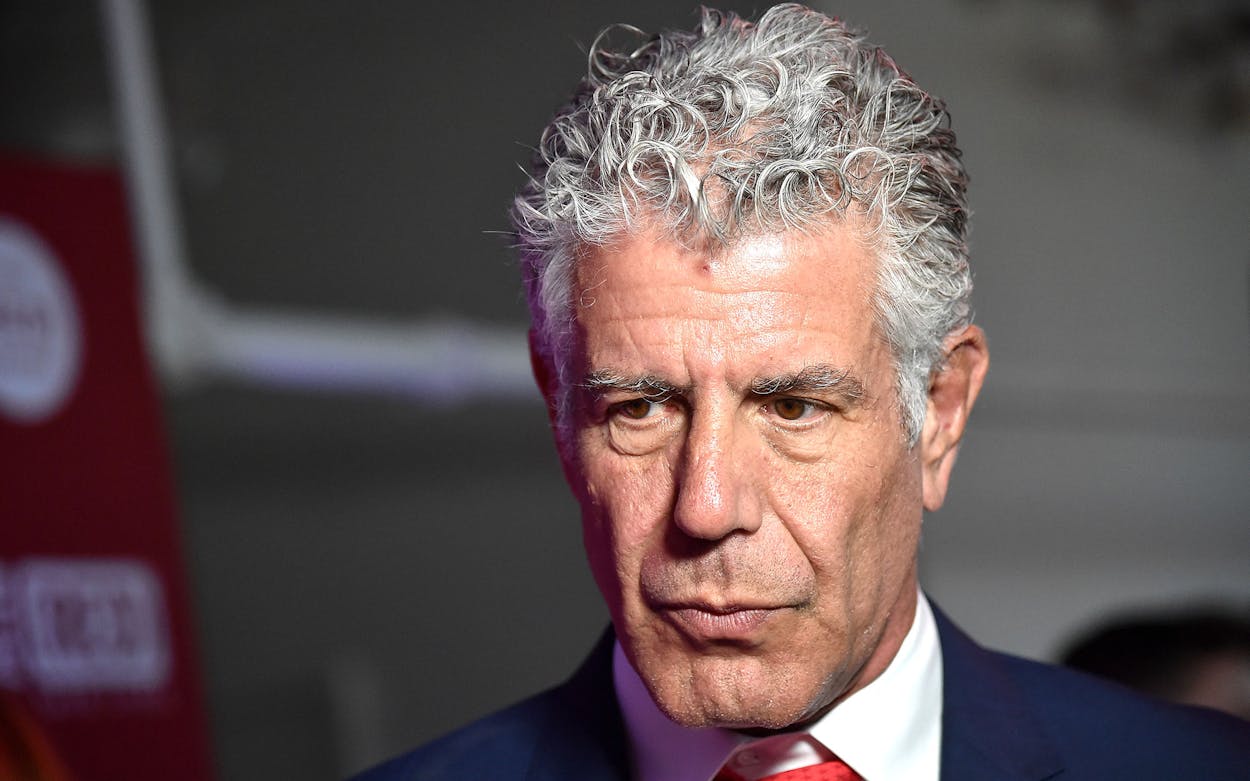On Friday morning, we lost one of our most curious culinary minds. Anthony Bourdain was found dead in a hotel room, age 61, of an apparent suicide. His work chronicling local cuisines was irreverent, funny, and unapologetically curious. Nowhere was that more true than in his Houston episode of Parts Unknown.
I’ve been a full-time journalist in Houston for over seventeen years now, and I was so impressed with what he did in the episode. Despite the city’s preoccupation with holding its own in fancy haute cuisine and valet parking restaurants, Bourdain managed to find—and love—the real Houston.
Of course, that’s not how it was received in the more hoity-toity sections of the city. I couldn’t help but chuckle at the responses from the socialite crowd around the time of its premiere.
“Why didn’t he go to Tony’s? For shame.”
“Um, he never even mentioned Cafe Annie.”
“I don’t know how anyone could say they covered Houston dining without going to Brennan’s.”
Here’s the thing that the upper crust of Houston didn’t realize: Bourdain had eaten in those restaurants all over the world. Houston’s versions of fine dining are fine indeed, but they are not what make Houston distinct from Atlanta, Dallas, Phoenix, or any other Sun Belt megapolis. Though white-linen steakhouses and chic Continental bistros have their place in cities, they seldom define a place.
The tut-tutting Bourdain inspired—and likely scoffed at—reminded me of the people who insist on taking out-of-town visitors to places like the Galleria, or who drone on and on about Houston’s skyline, or who brag about the Theater District’s many seats, or talk about the Downtown Tunnels as if they were one of the Wonders of the World. These are big-city amenities, sure, but they’re not what makes Houston a uniquely vibrant city.
Bourdain recognized that. He dug beneath that shiny surface and found the real Houston: the Gandhi District, cricket in Alief, slabs, hip-hop, slow-smoked East Texas barbecue, Vietnamese crawfish, quinceañera culture. He saw the great sprawling ethnic multiplicity that oozes in the preternatural heat from the Gulf Coast to the Piney Woods, from the swamps east of town to the prairies to the west. It ain’t the heat here, Bourdain realized, it’s the humanity.
I’ve walked over 200 miles of Houston streets on journalistic foot-slogs, so I know a thing or two about my hometown on a granular level. And while I wish I could have been there to show him some of my hard-earned finds—places like the taco food court at Sunny Flea Market on Airline Drive, or Mexican sushi on Aldine-Westfield Road—he managed to see that side of the city all on his own. He parachuted into town and nailed Houston as it really is, and not how it wants to be. As a lifelong Houstonian, it blew my mind how well he, as a total outsider, showcased what does indeed make this place worth it.
Godspeed, chef.







